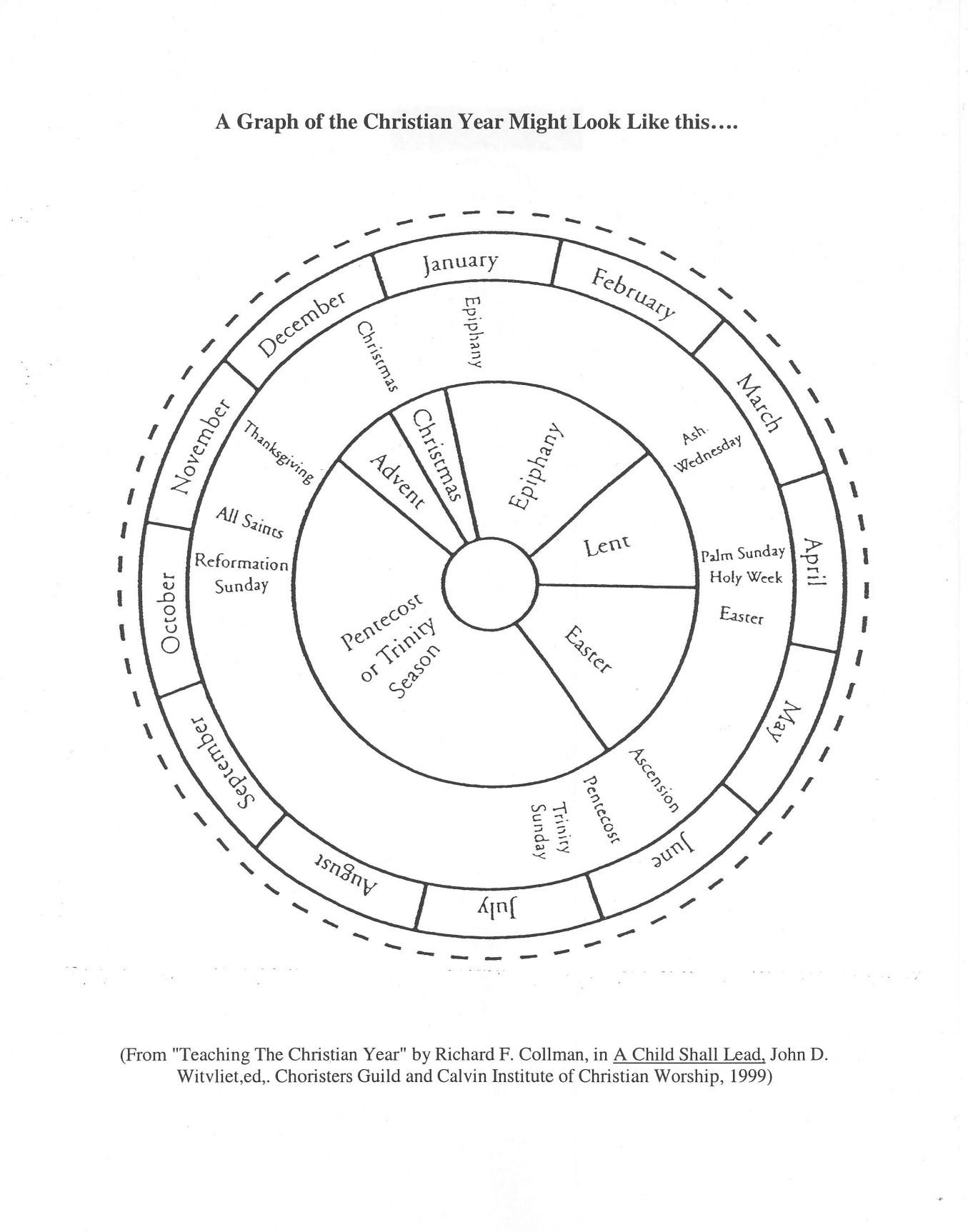The Christian Year: Two Vivid Pictures
We discover easily that visual communication is often most effective. So if we are going to teach the Christian Year to our congregation, some diagram or picture of the Christian Year is needed, or at least some helpful metaphor that will portray it’s dynamic.
The word “year” really is inadequate. It only says that this is something which you can expect to find repeated every twelve months. It sounds too much like dead data from a calendar. Two other possibilities must be considered.
We can talk about the cycle of the Christian Year, since a cycle involves movement. It is dynamic and repeats itself. It is also progressive, with each part flowing naturally into the next. Whereas it may be easy to think of a year as a succession of months, beginning with one and ending with another, a cycle is continuous so that at the end it returns to the beginning point to start all over again. There is no beginning and no ending. Therefore many churches prefer to speak of the “Cycle of the Christian Year” because it captures these marks of the year best.
In doing so, they will picture it like this

Or we can talk about the journey of the Christian Year. A journey also is dynamic; it has a point of beginning and a point of conclusion. It involves steady movement from one location to the next. A journey also assumes that some stages are necessarily prior to others; there is a gradual escalation of fulfillment as the journey progresses. Therefore you will find churches talking about the “Journey of Advent” or the “Journey of Lent”, etc. Yet the concept or picture of a journey lacks the continuation of the process repeatedly. Once a journey is done it’s done, whereas cycle immediately returns to the beginning again.
If you select journey as your picture, you will likely design it something like this:
|
Phase 1 |
Phase 2 |
Phase 3 |
Phase 4 |
|
Advent |
Lent |
Eastertide |
Ordinary Time / Growing Time |
|
→ |
→ |
→ |
→ |
|
Preparation, Prophecy |
Ministry, Suffering, Death of Christ |
Resurrection, Appearances, Ascension |
Holy Spirit, Christ the King, Formation / Mission / Growth of the Church |
|
Christmas Eve |
Ash Wednesday |
Easter |
Pentecost |
However in both of these instances, you will have to make a decision about the number of stages into which the cycle or journey is divided. Some will speak of two stages, some of three, and some of four.
- Those who speak of two stages will talk about the cycle or journey of Advent (which includes Advent, Christmas and Epiphany) and that of Lent (which includes Lent, Holy Week, Easter, Eastertide and Pentecost).
- Those who speak of three stages will talk about the cycle or journey of Advent (including Advent, Christmas and Epiphany); the cycle or journey of Lent (including Lent, Holy Week and Easter); and then they will speak of the cycle or journey of Eastertide (including Easter, post-Easter appearances, Ascension Day and Pentecost).
- Those who prefer to speak of four stages in this journey or cycle will talk about the first cycle or journey as Advent (including Advent, Christmas and Epiphany); the second as Lent (including Ash Wednesday, Lent, Holy Week and Great Triduum); the third as Eastertide (including Easter, post-Easter appearances and Ascension Day); and the fourth as Growing Season (including Pentecost, Ordinary Time and Christ the King Sunday).
Whichever you select, take care to be consistent.